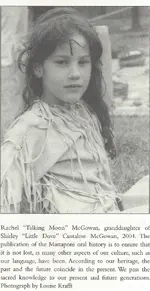IPUK,
Be careful of what you read and what you think you know. Not everything, in fact, most of what is written as history is wrong. Its written by folks based on what they “think” happened.
Giving them the benefit of the doubt that they truly believe what they write, doesn’t make it true. The folks that lived it know what happened and why. What really happened is often a very different story. And; I would say, a much more interesting story.
I don’t know Apache history. But I do know a thing or two about real First Nation history. At least what happened around my part of the world.
Let me give you an example.
Conventional “history” and book knowledge tells you Chief Powhatan, high chief of the Powhatan Confederacy, had a daughter, Pocahontas, who as a young maiden threw herself over the body of John Smith to save him from the tomahawks of tribe elders. History will tell you she was love smitten by Smith and couldn’t see her hero and love interest slaughtered. Then only to be forsaken in love by Smith and later courted by and her hand won by the charm of another colonist, John Rolfe. Hogwash! All of it.
First up, the stories don’t even get the names right. The chief’s name was Wahunsenaca. His title was Powhatan. His young daughter’s name, at the time, was Matoaka. She was a child of around 10 years old. Her mother’s name was Pocahontas. Her mother having died in childbirth when young Matoaka was born. Matoaka means “flower between two streams”. Considering the marriage of Wahunsenaca and his first and primary wife, Pocahontas, were of the two river tribes, Pamunkey and Mattaponi, it’s a fitting name. Only when Matoaka came of age did she at her powwow of passage take her mother’s name of Pocahontas as she is known today.
The event of Smith’s capture and extended “visit” with Wahunsenaca culminated in Wahunsenaca’s plan to “adopt” the Colony as an allied tribe under the Powhatan Confederacy and install Smith as its subordinate chief. It was a strategic and political alliance. Thus the reason for the ceremony which either Smith misrepresented in his later writing or never understood as it unfolded.
Regardless, young Matoaka would NOT have been in attendance. It was a spiritual as well as a political affair and children would not have been in attendance. It never happened. It does not appear in Smith’s considerable writings at the time, and only appears years later when he recounts the adventure, much embellished, long after Matoaka (Pocahontas) and Wahunsenaca’s death.
Don’t even get me started on the “love affair” with Rolfe. The real truth is a much more sordid and sinister tale. I often think of Pocahontas buried in your neck of the woods at Gravesend. I know her spirit longs for the shores of Tsenacomoca. A true American princess abandoned in a foreign land.
And; why would Wahunsenaca, Powhatan of all of Tsenacomoca, want to adopt the fledging English Colony? To form a military alliance against the Spanish. And; what did Wahunsenaca know of the Spanish? Quite a lot. He was most certainly not the back woods savage many would have you believe.
Ever hear of Don Luis de Velasco, formerly known as Paquiquineo. I doubt you have and I seriously doubt you know the significance of the connection. Few do. Except the ones who lived it, and recounted it in oral tradition where its passed down and still told today. Its an inconvenient truth that gets in the way of the “history” folks (especially British folks) want you to believe.
Yes, to the victors goes the right to write the history. But; It’s the stuff of dime novels and revisionist. Doesn’t make it true.
This photo of a current descendant, I believe, accurately reflects what Pocahontas would have looked like at John Smith’s coronation ceremony.









